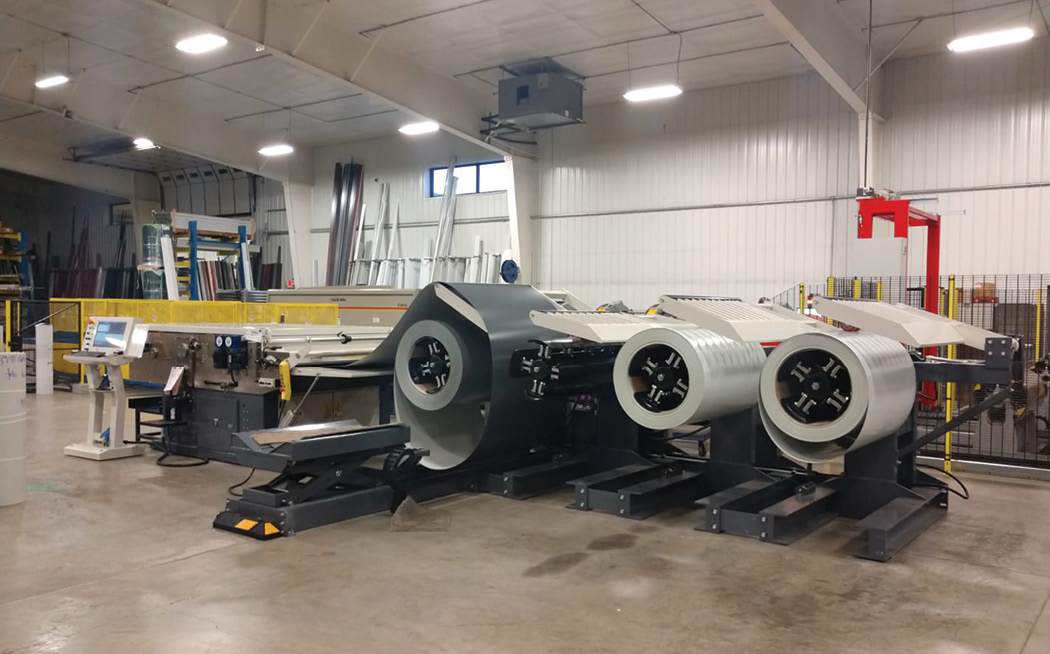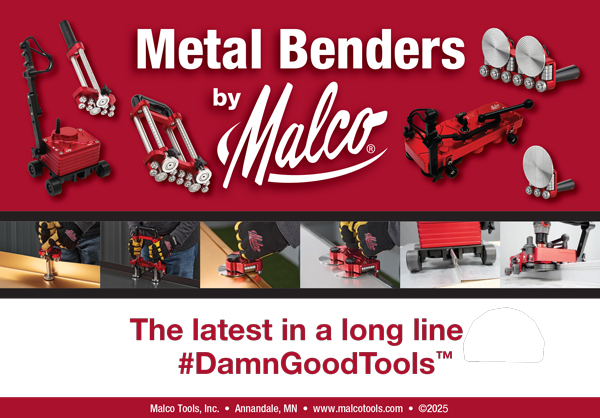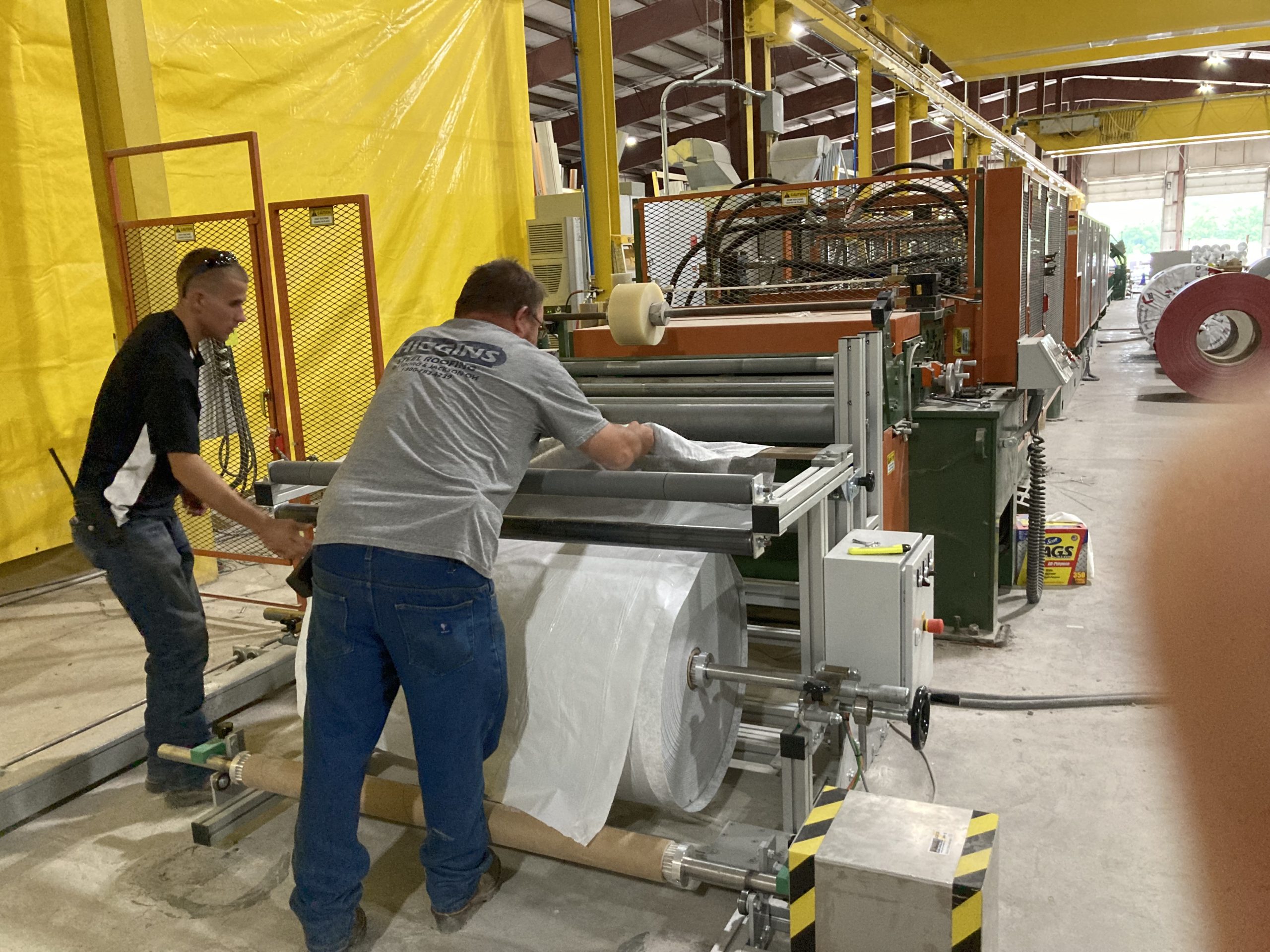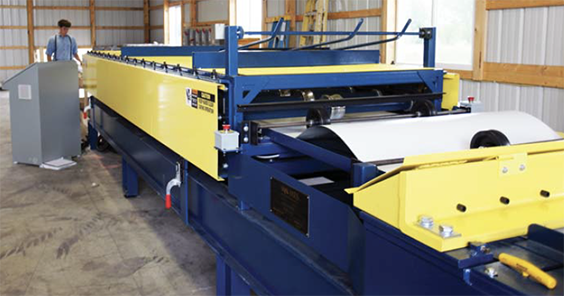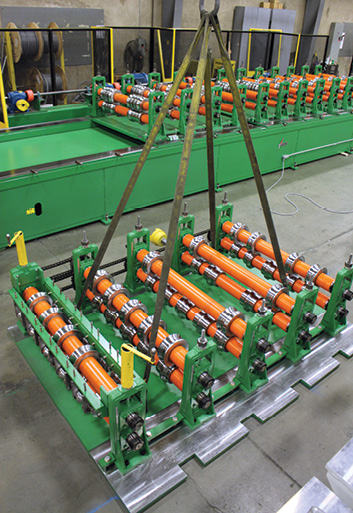What Long Creek considers when buying new equipment
By Sharon Thatcher
With 17 fabricating machines helping to feed their business, Long Creek Steel has been through the machine acquisition process many times. Their most recent purchase was an automated trim line from SWI Machinery.
Strouth said the company has always bought new equipment, even from the very start. No decision, however, has been hasty. Strouth said when the Hofer family started the fabrication side of the business, “they started with the minimum number of machines needed: they had the roll former, a brake and they had a manual slit line. It was all good equipment, but it was essential equipment needed to get them started. As the company grew, we’ve added more and more machinery all the time. We’re always thinking and looking for ways to increase production. We’re always looking for equipment that is of high quality, but at a fair price.”
They did not have any SWI equipment when they ventured to the Construction Rollforming Show in late 2019 and saw the Marxman Pro in action. “We saw it at the trade show, that’s how it all originated,” Strouth said. “It really caught our eye; we saw a need for the investment and knew that this would give us the opportunity to help increase our production.”
There continued to be a lot of discussion with SWI before a commitment. “We talked about it back and forth several months before we committed,” he said. “They put a good program together and, in my opinion, they have a lot of capabilities that speeds up our process.”
An important and sometimes forgotten part of the purchasing process really comes down to personality of the company’s representative. Strouth noted: “For us, as a company, it’s important to have a representative that has great knowledge of their equipment and a good personality. As we move forward with the transaction we find things out about a machine or a company that fits our need; their personality plays into [the decision] … Not only does [SWI] have great salespeople and support behind them, they have a great product.”
Long Creek Steel purchased three new machines from SWI for a complete line: a 4-station modular uncoiler, a Marxman Pro, and a recoiler.
As noted previously, the new line did not replace anything Long Creek already had but rather was added to their operation. “What we’re always looking for is opportunity for advancement in lineal footage per man hour. The technology [SWI] brought forward gave us that opportunity where, with our budget, cash flow and payback, it made sense. That’s the determining factor: how soon it pays itself back with the technology; not that I’m looking to get rid of people, but as we grow, I need additional [productivity]. If I can’t do it with the number of people, I have to do it with the machine.”
Jason Smoak, of SWl’s U.S. operations, said the Marxman Pro offers particular advantages because of its automated features. “The Pro has both a guillotine shear as well as a part cut slitter,” he said. “The shear allows just a single stroke to cut the entire width of the coil and the part cut slitter gives the machine the option to cut any piece anywhere on the sheet.”
Important in this tight steel market is also its nesting capability — controlling what fits mathematically on a sheet of coil with the least amount of scrap. “With prices going up, you have to be the most efficient you can be, you need your scrap to be as low as possible,” Smoak said.
With manual slitters still common in the industry, Smoak said a potential buyer needs to look at their own business model before upgrading to an automatic slitter but there are obvious advantages. He said customers “definitely need to look at their volume and how much scrap they have and also how many set-ups they’re doing per day and how long it takes for each one of those setups, because that operator could be a lot more efficient, maybe free that guy up to do another job.”
Because of the experience in using multiple machines, Long Creek Steel needed minimal instruction to get up to speed with their new line. SWI did the install and sent a technician to help with training and software integration. Smoak said their machines are “pretty foolproof,” but if there is a problem, help is only a phone call away. “We have Team Viewer on all our controls so we can log into the control and see what the issue is; 90% of the time we can fix it over the phone.” RF

